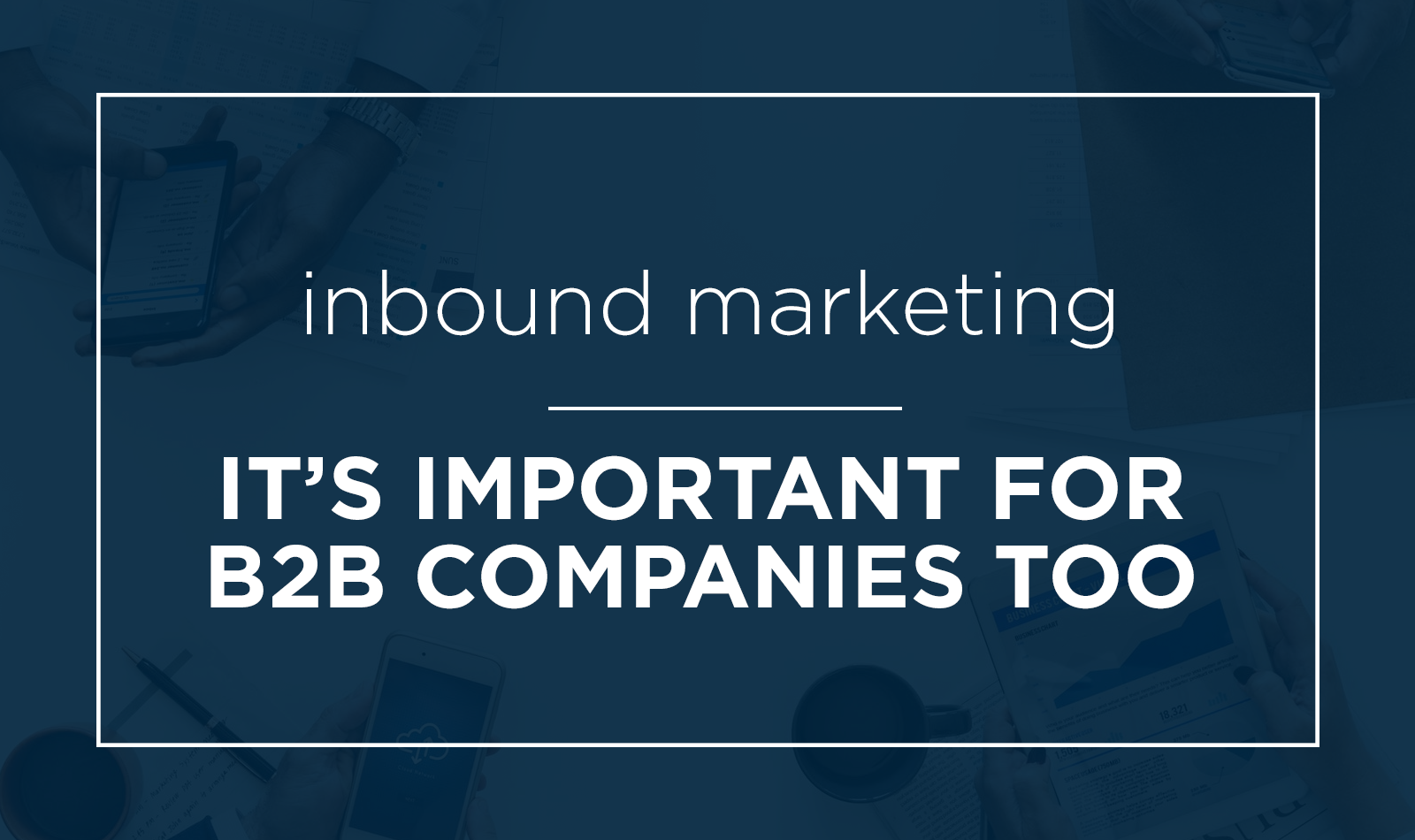
When you consider B2B and inbound marketing, it’s easy to think that content production platforms like blogs and social media don’t work, or that they’re best for brands and companies selling straight to the consumer.
As the buyer experience has evolved and instant technology is all around us, incorporating the inbound methodology into your overall B2B marketing strategy is not only important—it’s essential.
Some B2B companies might not recognize the potential value of marketing their own brand—and even if they do, they might not consider it to be a priority. But, more and more are starting to invest in it, and they’re getting results. For example, did you know that outbound leads cost B2B businesses 39% more than inbound leads?
The average difference in cost per lead alone should be enough to convince you that inbound marketing is the way to go! But in case it hasn’t, here are five ways inbound marketing can improve your B2B business.
1. Improve your brand awareness
“B2B companies with brands that are perceived as strong generate higher earnings before interest and taxes (EBIT) profitability margins.” – Forbes
Even if your company doesn’t sell directly to consumers, it’s important to have brand recognition. It can take anywhere from 5 to 8 impressions before a prospect will remember your brand.
You can improve your brand awareness by publishing useful content on blogs, social media, and industry publications. Partnering with industry thought leaders is an excellent way to boost brand awareness and help you get on the path to becoming a thought leader in your own right.
2. Increase your website traffic
“B2B companies that blogged 11+ times per month had almost three times more traffic than those blogging 0-1 times per month; and 43% of B2B marketers say blogging is their most important type of content.” – HubSpot
Part of improving brand awareness will be to drive more traffic to your website—whether it’s to a blog post, homepage, service page, or contact page. The more relevant content you publish, the more your website (and brand) has the chance of showing up in search engine results, which in turn increases the chances of users viewing your site.
This can also help drive more qualified traffic to your site. When people search for answers to specific questions, they’ve already identified the problem they’re having, and are conducting research to figure out what might be their best solution. You’ll want to capitalize on this and capture as much of that traffic as possible.
3. Communicate with your audience
Consider what your customers want to see. According to the Demand Gen Report of 2016,
“96% of B2B buyers want content with more input from industry thought leaders.”
Stay top of mind with your customers by answering their burning questions. You can do this in a number of ways—on your website, on your blog, on social media—with copy, video, infographics, ebooks, white papers, and more.
As you continue to educate your audience, they’ll move further down the sales funnel. Building valuable relationships with contacts can help turn them into customers, and even brand evangelists (a brand evangelist is a person who believes in your product or service so fervently that he or she aggressively promotes it to others).
4. Segment your audience
Break out your audience into detailed buyer personas in order to better deliver relevant content on an ongoing basis. The more you understand your personas, the easier it will be to create content they want to consume.
Set up automated workflows for new leads, customers, and more to keep them moving along the sales funnel. The best part about this is once you set them up, your CRM does all the hard work and you can sit back and wait for leads to come in! (Okay, maybe don’t do that, but you get the idea—more time for other work!)
5. Position your company as an industry thought leader
By following the nature of the inbound methodology, you’ll naturally be publishing a lot of content. As long as your content is relevant, interesting, and backed with research, you’ll be seen as a trusted partner—not just a vendor.
You might be thinking that becoming a thought leader is easier said than done, right? Or the term may be overused? While those may both be true, there’s no reason to let them deter you from trying. Your unique offering—what sets you apart from your industry competitors—is where your expertise lies. Assert your prowess by educating your audience with content that’s helpful, and you’ll be a thought leader (whatever that definition means to you) before you know it.
“77% of B2B purchasers prefer to do their own research before ever speaking to a salesperson.” – HubSpot
B2B consumers don’t want to be sold to in old-fashioned ways anymore—they expect you to give them something of value first, and inbound marketing is the way to do just that. It will certainly take a little patience, and a lot of effort to create an inbound strategy and implement it, but it will be more than worth it when you start seeing more educated leads (that cost you less money) come through your door.



